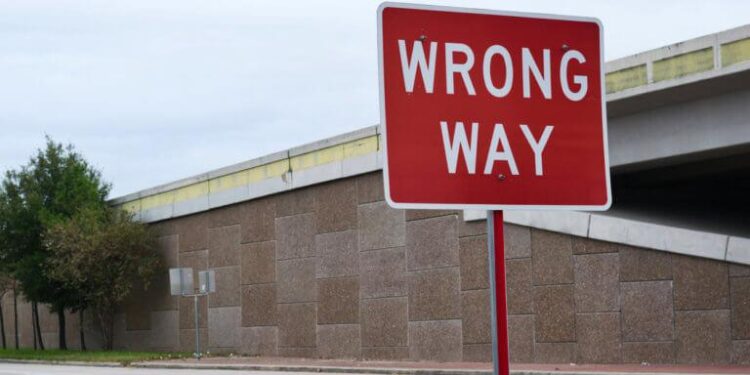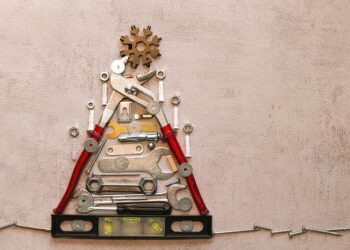In an alarming yet increasingly common scenario, drivers occasionally find themselves facing oncoming vehicles traveling in the wrong direction. Such incidents, often caused by confusion, impaired judgment, or navigational errors, pose significant risks on Luxembourg’s roadways. The Luxembourg Times examines what steps motorists should take when confronted with a wrong-day driver, offering expert advice and practical safety measures to minimize danger and prevent potential collisions.
Recognizing the Signs of a Wrong-Way Driver on Luxembourg Roads
Spotting a wrong-way driver early can be lifesaving on Luxembourg’s roads, where narrow highways and fast-moving traffic leave little margin for error. Key indicators include vehicles traveling against the flow of traffic, often illuminated by their headlights cutting through the darkness or the glaring reflection from road signs facing oncoming drivers. Pay special attention to erratic driving behaviors such as sudden swerving, abrupt stops, and inconsistent speeds, which may signal confusion or panic. Additionally, observe the position of the driver’s vehicle relative to lane markings-when a car is persistently straddling or crossing into opposing lanes, it’s a strong warning sign.
How to recognize a wrong-way driver:
- Headlights glaring directly at you on one-way or divided roads
- Vehicle moving opposite to traffic flow, often in a panic or at inconsistent speeds
- Sudden, erratic speed changes and lane swerving
- Ignoring signage meant to indicate the correct direction
| Time of Day | Likelihood of Encounter |
|---|---|
| Night (9 PM – 5 AM) | High |
| Early Morning | Moderate |
| Daytime | Low |
Immediate Safety Measures to Protect Yourself and Other Motorists
Upon spotting a driver going the wrong way, your immediate focus must be on minimizing risk for yourself and those around you. Slow down gradually to avoid sudden braking that could cause accidents. Move to the rightmost lane if possible, creating a clear passing zone. Turn on your hazard lights to alert other motorists of the imminent danger. If on a highway or busy road, try to take an upcoming exit safely to put distance between you and the wrong-way driver. Keep calm and avoid aggressive maneuvers that may provoke panic or loss of control.
Maintain constant vigilance by watching mirrors and adjacent lanes for erratic behavior from the oncoming vehicle. If you carry a mobile phone, call emergency services immediately and provide them with your location, direction, and descriptions such as vehicle type and color. Communicate with nearby drivers by flashing headlights or honking only if it can be done safely. Always prioritize defensive driving techniques, including:
- Keeping an escape route available
- Reducing speed progressively
- Using signals early to inform other drivers
- Staying alert and anticipating sudden stops or evasive actions
How Authorities Respond and What You Should Do After Encountering a Wrong-Way Driver
When authorities receive reports of a wrong-way driver, their response is swift and coordinated. Police units are immediately dispatched to intercept the vehicle, often using multiple patrol cars to block exits and minimize potential collisions. In Luxembourg, traffic control centers also work closely with emergency services, activating alert systems on electronic road signs and broadcasting warnings via radio and social media channels to inform drivers of the hazard ahead. This rapid mobilization aims to protect motorists and prevent accidents in the critical minutes before the wrong-way driver is stopped.
For drivers who find themselves facing a wrong-way vehicle, safety is paramount. Experts advise remaining calm and taking immediate defensive actions such as:
- Slow down and pull over to the right shoulder or as far off the road as possible
- Use your hazard lights to alert other drivers
- Avoid sudden maneuvers that could cause loss of control
- If safe, call emergency services to report the location and direction of the wrong-way driver
Staying vigilant and following these critical steps can save lives. Knowing how authorities operate and what you should do empowers drivers to respond effectively in an otherwise terrifying situation.
| Step | Action | Purpose |
|---|---|---|
| 1 | Slow down and move right | Increase safety margin |
| 2 | Activate hazard lights | Warn other road users |
| 3 | Contact emergency services | Alert authorities promptly |














![Leyla Aliyeva visits Azerbaijan National Carpet Museum [PHOTOS] – AzerNews](https://europ.info/wp-content/uploads/2025/12/3035623-leyla-aliyeva-visits-azerbaijan-national-carpet-museum-photos-azernews-120x86.jpg)

